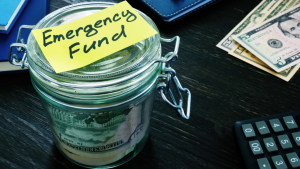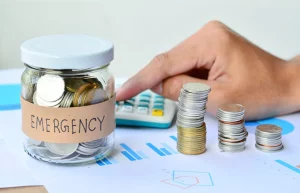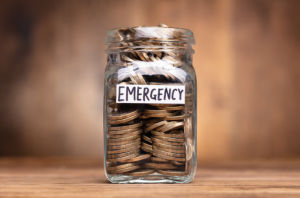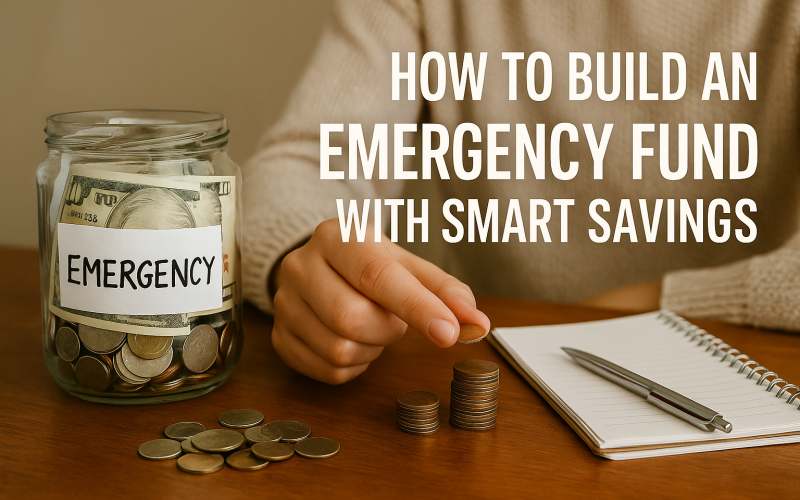Introduction
Life is full of surprises, and some of them can be expensive. From sudden medical bills to car repairs or unexpected job loss, emergencies can strike at any time. That’s why having an emergency fund is one of the most important steps in securing your financial future. An emergency fund is money set aside for those unexpected costs, and it can help you avoid going into debt when life throws a curveball.
Building an emergency fund may seem like a daunting task, but it doesn’t have to be. With the right strategies and mindset, you can start saving effectively and build a financial cushion that will give you peace of mind. In this article, we’ll explore smart ways to build an emergency fund, step by step, and share tips on how to save consistently and quickly.
What is an Emergency Fund?
An emergency fund is a savings account specifically reserved for unexpected or urgent financial needs. Unlike your regular savings, which may be used for planned purchases, like a vacation or a new gadget, an emergency fund is only for situations that arise suddenly and are out of your control. Some common examples of when to use your emergency fund include:
- Medical emergencies or unexpected health expenses
- Car repairs or unexpected home maintenance
- Job loss or a sudden reduction in income
- Emergency travel expenses (e.g., for a family member’s funeral)
The main goal of an emergency fund is to help you avoid going into debt when an unexpected expense comes up. By having money set aside, you can handle these situations with less stress and without derailing your financial stability.
Why You Need an Emergency Fund

Building an emergency fund is important for several reasons. Here are a few key benefits:
Provides Financial Security
Having an emergency fund provides a safety net in case of unexpected expenses. Knowing that you have money set aside for emergencies allows you to feel more secure and less anxious about life’s uncertainties.
Avoids Debt
Without an emergency fund, you may need to rely on credit cards, personal loans, or other forms of debt when emergencies arise. This can lead to high-interest payments and a cycle of debt. An emergency fund helps you avoid this situation and stay financially healthy.
Protects Your Long-Term Goals
If you don’t have an emergency fund, you may have to dip into your retirement savings, investments, or other long-term funds when an emergency happens. This can set back your future financial goals. Having a separate emergency fund ensures that you won’t touch your retirement or long-term savings in times of crisis.
Reduces Stress
Financial stress is one of the leading causes of anxiety. When you have an emergency fund, you reduce the stress that comes from worrying about money. It provides peace of mind, knowing that you are prepared for the unexpected.
How Much Should You Save in an Emergency Fund?

The amount you need to save in your emergency fund depends on several factors, including your lifestyle, expenses, and financial goals. However, most experts recommend having three to six months’ worth of living expenses set aside in case of an emergency.
Here’s a simple way to calculate how much you need:
List all your monthly expenses (housing, utilities, groceries, transportation, etc.).
Multiply that number by 3 or 6, depending on your comfort level and job stability.
3 months’ worth: If you have a stable job, low-risk profession, and minimal debt, three months of expenses should be enough.
6 months’ worth: If you’re in a more volatile situation, such as being self-employed, having a variable income, or living paycheck to paycheck, six months of expenses would be a safer amount.
For example, if your monthly expenses are $2,000, your emergency fund should range from $6,000 to $12,000.
Where Should You Keep Your Emergency Fund?

Your emergency fund should be easily accessible but not too easy to spend. You want a place where you can access the money quickly when needed, but it should be separate from your everyday spending accounts to avoid the temptation to use it for non-emergencies.
Here are some good options for where to keep your emergency fund:
High-Yield Savings Account
- A high-yield savings account is one of the best places to keep your emergency fund. It offers easy access to your money while earning interest. The interest rates may be higher than traditional savings accounts, helping your money grow over time.
Money Market Account
- Money market accounts offer similar benefits to high-yield savings accounts but often have higher minimum balance requirements. They provide liquidity and may offer better interest rates.
Certificate of Deposit (CD)
- If you want to earn higher interest rates and don’t need immediate access to your emergency fund, a CD can be a good option. However, the money is locked in for a set period, so it may not be ideal for emergencies that require quick access.
Traditional Savings Account
- If you’re just starting out and don’t have a lot to save, a traditional savings account is a simple option. While the interest rates are usually lower, it’s easy to access your funds.
How to Build Your Emergency Fund: Smart Savings Strategies

Building an emergency fund doesn’t happen overnight, but with the right strategies, you can make steady progress toward your goal. Here are some science-backed tips to help you save smarter and faster.
Set a Realistic Goal
- Start by setting a specific goal for your emergency fund. Based on your monthly expenses, decide how much you want to save and set a target date. Breaking it down into manageable milestones can help you stay motivated. For example, if you want to save $6,000 in six months, you would need to save $1,000 per month.
Automate Your Savings
- Automating your savings is one of the best ways to ensure consistency. Set up automatic transfers from your checking account to your emergency fund account each payday. By automating your savings, you won’t have to think about it, and the money will be saved before you have the chance to spend it.
Cut Unnecessary Expenses
- To build your emergency fund faster, take a close look at your spending habits. Identify non-essential expenses that you can reduce or eliminate, such as dining out, subscriptions, or impulse purchases. Redirect these savings toward your emergency fund.
Use Windfalls and Extra Income
- Whenever you receive unexpected money, such as tax refunds, work bonuses, or gifts, consider putting it toward your emergency fund. This will help you reach your goal faster without affecting your regular income.
Start Small, Then Build Up
- If you’re just getting started, don’t worry about hitting your target amount right away. Start with a small goal, like saving $500 or $1,000, and gradually increase your savings over time. The key is to make consistent progress, no matter how small.
Avoid Using Your Emergency Fund for Non-Emergencies
- It can be tempting to dip into your emergency fund for non-emergencies, but it’s important to resist. Make sure you’re only using the fund for true emergencies, like medical bills or car repairs, and avoid using it for vacations, shopping, or other non-essential expenses.
Table: Steps to Build an Emergency Fund
| Step | Action |
|---|---|
| 1. Set a Realistic Goal | Determine how much you need for 3-6 months of expenses. |
| 2. Automate Savings | Set up automatic transfers to your savings account. |
| 3. Cut Unnecessary Expenses | Identify areas to reduce spending and save the difference. |
| 4. Use Windfalls | Put unexpected money (tax returns, bonuses) toward savings. |
| 5. Start Small | Begin with smaller savings goals and increase over time. |
| 6. Avoid Non-Emergencies | Only use the fund for actual emergencies. |
Conclusion
Building an emergency fund is one of the smartest financial moves you can make. It gives you peace of mind, protects you from unexpected expenses, and helps you avoid going into debt when life surprises you. By setting realistic goals, automating your savings, and cutting back on unnecessary expenses, you can steadily grow your emergency fund over time. The key is consistency and discipline. With the right strategies, you’ll be able to handle any financial emergencies that come your way.
Call-to-Action
Ready to start building your emergency fund? Begin today by setting your savings goal and automating your contributions. Take control of your finances and build a safety net that will help you achieve financial security. Start saving now and take the first step toward a more stable financial future!











